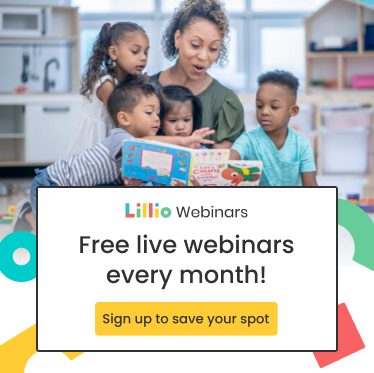What do children learn from loose parts play?
What are loose parts?
Loose parts are natural objects or materials which provide children with endless opportunities to build on their play. Loose parts offer children:
- Opportunities to create and expand their play skills.
- Materials that support their play and cognitive development.
Children enjoy exploring and playing in their environment by manipulating and creating experiences with the materials they have access to. I believe it is important for early childhood educators and parents to use loose parts and open-ended materials in their classrooms and at home. This is because it provides many opportunities for children to be curious, creative and make meaning of the natural world around them.

When I create activities and experiences for children, I am sure to incorporate loose parts in my planning. Children can use leaves from outside to make a painting, explore a sensory bin filled with sand and rocks, and use different sized cardboard boxes to build a tower.
I see children more engaged in their learning when they can use any material they are given for any purpose. This builds their imagination and curiosity.
Examples of loose parts
Below are examples of loose parts materials that can be incorporated into a child’s playing to improve their development.
- Cardboard, newspaper and wrapping paper.
- Pine cones, flowers, sticks, leaves and acorns.
- Straws, beads, pom poms, cotton wool.
- Sand, shells, sticks and stones.
- Wooden blocks, rolling pins, and cups.

Classroom areas to incorporate loose parts
Dramatic play area
Add blankets, play cars, animals and people, and recycled materials (e.g. cereal boxes).
Art area
Provide straws, beads, natural and coloured popsicle sticks, and pom poms.
Construction or block area
Provide cardboard boxes and wooden blocks.
Sensory bin
Add sand, water, shells, cups and feathers.
Outdoor playground
Provide balls, buckets, hula hoops and coloured scarves.
You don’t need to buy toys or premade activities for children. You can save your time and money by allowing children to build and show you how to use loose part materials and what they want to create. This gives you the opportunity to learn from them and explore new ideas.

Simple and easy loose parts activities
Painting with leaves
Use different coloured leaves from outside to make a painting using a variety of coloured paints. Allow children to dip the leaves into the paint and place the leaves onto white blank paper.
3D art
Use cardboard boxes, toilet paper rolls, pom poms and glue. Allow children to glue the pom poms, toilet paper rolls onto to the cardboard box to create 3D Art.
Fall-themed sensory bin
Add leaves, pumpkins and pine cones to a big bin. Give children the chance to explore the different materials by using their senses (feel, touch, smell and see).
Loose parts offer many opportunities for children to use natural materials and objects in their environment. This allows them to make meaning of the natural world around them and manipulate materials however way they would like. Loose parts provide many experiences for children to be creative, curious and imaginative. To see how your child is exploring loose part materials in their classroom environment, use the form below to learn how HiMama can keep parents/educators connected with daily pictures and videos at your childcare center!
Never miss another important developmental milestone!



